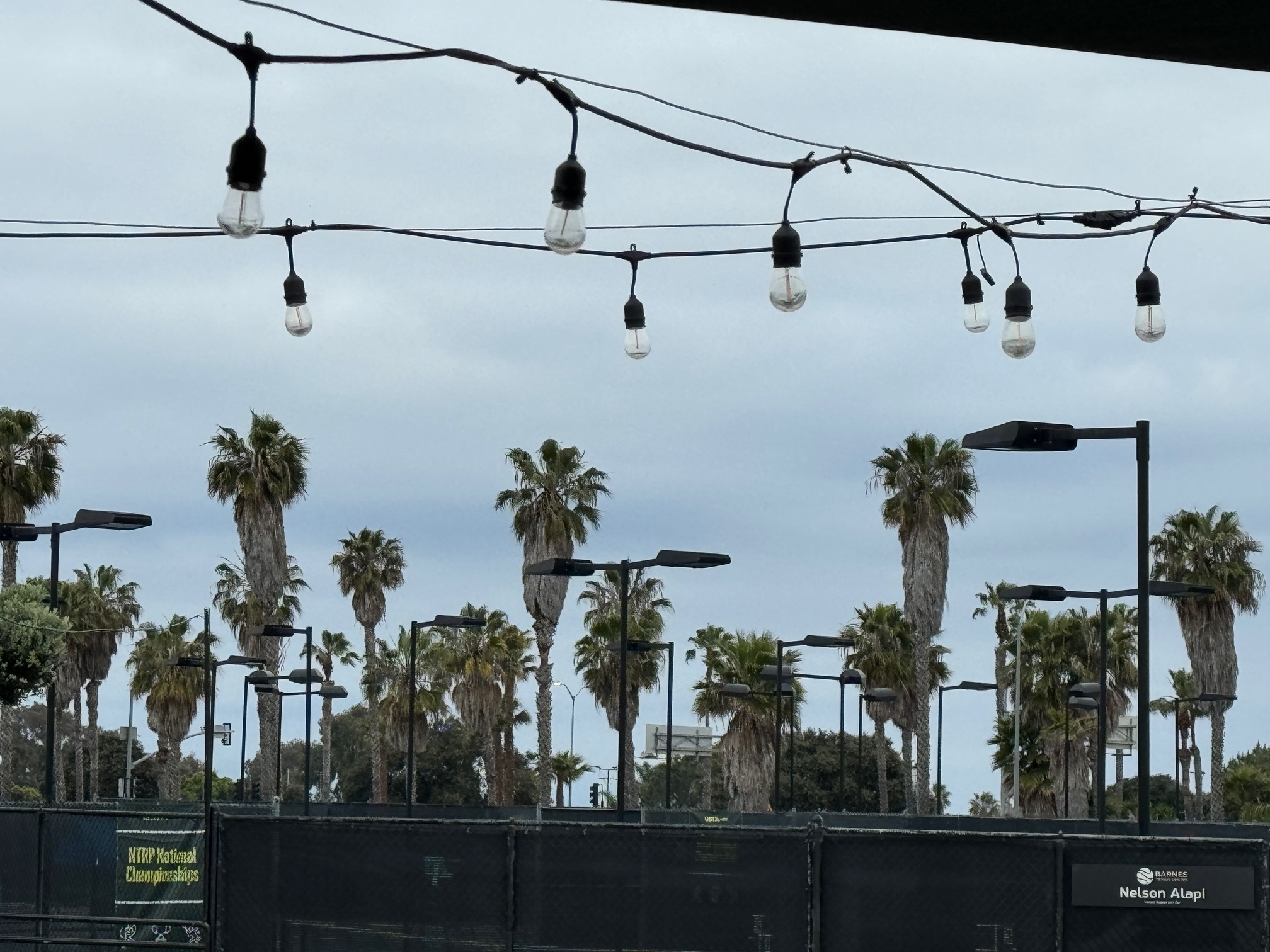The 2024 edition of the USTA’s Friend at Court contains Regulation updates for conducting sanctioned tennis tournaments in the United States. I suspect that most casual tournament players will never notice any difference. In fact, there is an above-average chance I would have missed it myself if I wasn’t explicitly looking for such changes.
The new USTA Regulations consolidate the roles and responsibilities of the Tournament Committee. This starts with the elimination of the “Tournament Chair.” For anyone unfamiliar with that position, the following definition was pulled from the 2023 Friend at Court. Since it no longer exists, the 2024 rulebook no longer contains the job description.
Tournament Chair. The Tournament Chair is the head of the Tournament Committee. This person is the official representative of the Tournament Committee to the USTA, Sectional Associations, and District Associations. Normally a Tournament Committee submits its sanction application through its Tournament Chair. The Tournament Chair may not serve as or assume the responsibilities of the Referee or Deputy Referee unless specifically authorized by other USTA regulations.
2023 USTA Friend at Court, Regulation 1.C.2
This effectively reduces the minimum size of the Tournament Committee from three to two people. However, the Regulations don’t preclude more people from being elected or appointed to the Tournament Committee. Some larger events may still have more people involved.
So, what is a Tournament Committee?
Tournament Committee duties. The Tournament Committee supervises all administrative details of the tournament, including the appointment of the Referee and the extent to which other officials will be used. It has broad discretionary powers in carrying out its functions in all cases not covered by the ITF Rules of Tennis or USTA Regulations.
2024 USTA Friend at Court, Regulation 1.C.1
While that is a rather broad description of responsibilities, it doesn’t even scratch the surface of what the Tournament Committee must do for each event. A detailed table of those items runs about a page and a half in the Friend at Court. As a topic for another day, I contend that some things on the list are either automated or not routinely performed.
Before eliminating the Tournament Chair, the Tournament Committee was a holy trinity of three people. It now consists of two minimum roles: the Tournament Director and the Referee. The new descriptions of those roles include some duties that were previously the exclusive domain of the Tournament Chair.
Tournament Director Responsibilities. The Tournament Director serves as the chief executive officer for the Tournament Committee; is the official representative of the Tournament Committee to the USTA, Sectional Associations, and District Associations; and is directly responsible for the administrative details of the tournament. The Tournament Director may not serve as or assume the responsibilities of the Referee or Deputy Referee unless specifically authorized by other USTA regulations.
2024 USTA Friend at Court, Regulation 1.C.2.a
I added italics in the last sentence of the Tournament Director’s description for ironic emphasis. Many Regulations scattered throughout this year’s Friend at Court outline the specific conditions when the Tournament Director and the Referee can be the same person. A few of those are new for 2024.
For those of you keeping score at home, this further reduces the minimum size of the Tournament Committee in some circumstances to one person who serves as both the Tournament Director and the Referee.
For completeness, here is the definition of the Referee from this year’s Friend at Court.
Referee and Deputy Referee. Each tournament shall have a person serving in the position of Referee. Upon appointment, the Referee becomes a member of the Tournament Committee. The Referee is the official who is responsible for assuring that the competition is fair and played under the ITF Rules of Tennis and USTA Regulations. The Referee supervises all aspects of play, including, but not limited to, the conduct and actions of players, coaches, parents, spectators, officials, groundskeepers, and administrative crew. A Deputy Referee is an official appointed by the Referee or Tournament Committee to assist in the performance of the Referee’s duties or to assume these duties when the Referee is absent. A Deputy Referee who makes the draw should also be a member of the Tournament Committee.
2024 USTA Friend at Court, Regulation 1.C.3
The table of duties for the Referee runs two full pages in the 2024 USTA Friend at Court.
I want to highlight one final regulation update associated with these role consolidations. The updated wording clarifies that the Referee, including a Tournament Director who assumes the referee’s responsibility, cannot serve on a Tournament Appeals Committee. Quite frankly, I thought that was already the case. The change notes seem to support the idea that it was always the intent that the Referee could not be involved in appeals of their decisions.
I suspect that most players are blissfully unaware of the behind-the-scenes organization required to conduct sanctioned USTA Tournaments. I also believe that the majority of players probably don’t care. If you made it all the way through this post, you’re most likely the exception to the rule.




Check this article I wrote for a National Magazine on “The Do’s of a Tournament Director”
Natihttps://issuu.com/uspta/docs/add_june_2021